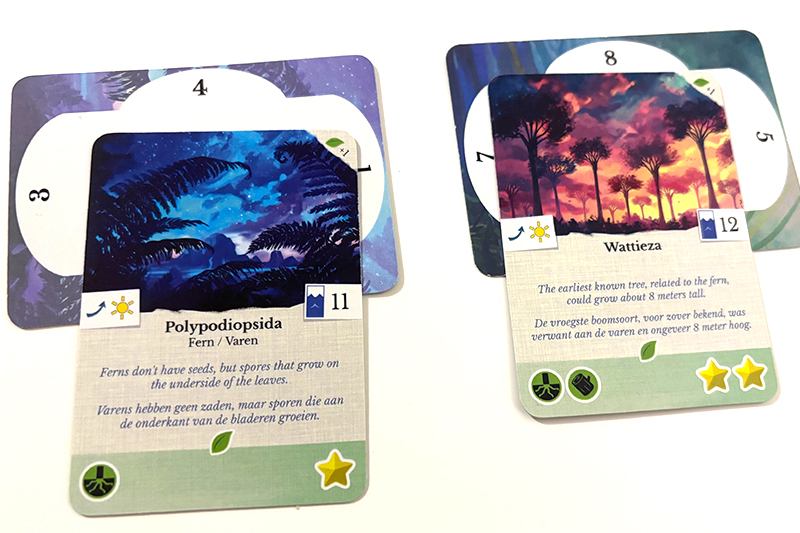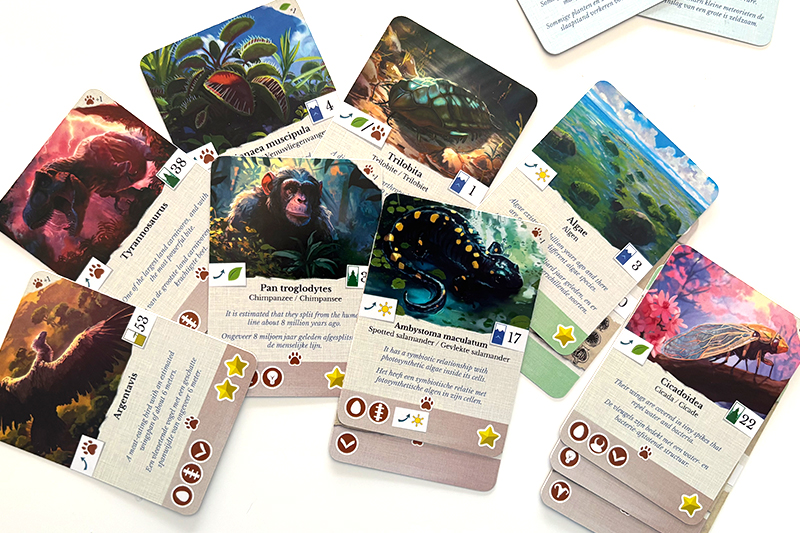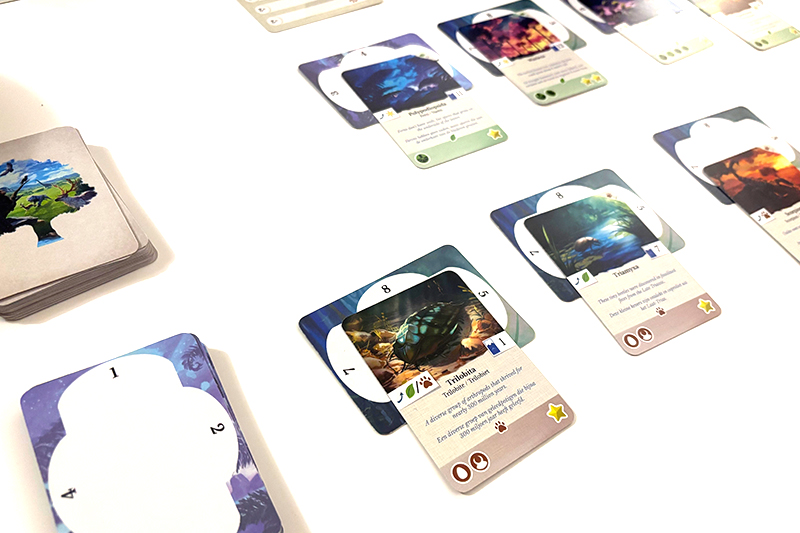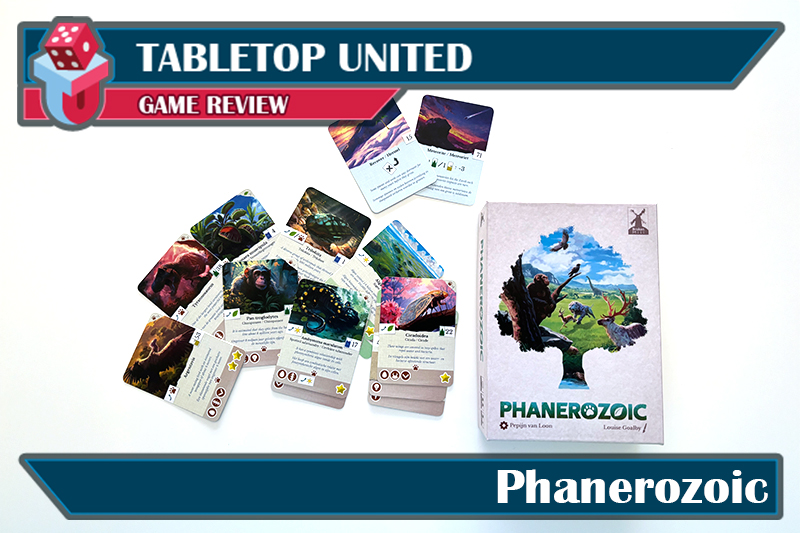Phanerozoic
Designer: Pepijn van Loon
Artist: Louise Goalby
Publisher: Broken Mill
Year Published: 2025
No. of Players: 1-4
Ages: 10+
Playing Time: 30-60 min
Main mechanic / Theme: Open drafting, Hidden victory points, Simulation
500 Million Years in the Making
Find more info on BoardGameGeek.com
Disclaimer: Publisher provided a copy of the game for this review. The version of the game reviewed is a prototype. Publisher notes that artwork and packaging is unfinished.
Overview:
It’s roughly 500 million years ago and you all are huddled around a primordial soup of nascent lifeforms attempting to craft an ecosystem suitable for your respective goals. You draft cards that mutate existing species, species cards that bring forth new distinct organisms, and event cards that can spell extinction or provide renewal. Once the actions are made by the players, watch as nature takes her course to see what thrives and what dies.

Gameplay and Mechanics
You have the power to shape the course of life on planet Earth by playing cards that alter, evolve, nurture, or destroy life forms. The nature phase of the game functions predictably, so the strategy lies in tactically drafting and strategically playing your cards while taking into account the suspected goals of the other players. Mutate, add, and remove species from the phylogeny to the pleasure and anguish of others.

Theme, Artwork and Illustration, Graphic Design and Layout
Phanerozoic’s art is some of the most beautiful I have ever seen in boardgames. The full color event and species art is thoughtfully distinct from the diagrammatic mutation cards while still being strongly thematic. The surrounding graphic designs evoke a clean museum infographic aesthetic that also nicely complements the theme of the game. This feels like a classy game that exhibits quality levels usually seen in much larger game companies. Graphics are widely appealing and competently designed. While not complex, the nature phase can be a lot of process to memorize. The rulebook could use some help with hierarchy and spacing, but my biggest suggestion is to improve the nature phase quick overview with a couple of infographics to allow for quick at-a-glance digestion. That or simply add another player aid card specifically for quick reference of the nature phase.
Inclusivity Statement:
Tabletop United believes that diversity is a source of fun and happiness. Nurturing and celebrating our personal differences can lead to amazing gaming (and life) experiences.Therefore, TTU is putting renewed emphasis on inclusivity and accessibility by adding a section in each of our reviews written after April 2021. You’ll begin to see more reviews with this section as time goes on. The inclusivity and accessibility section will critique those issues and strengths of the subject in the review based upon the unique background of the reviewer. Each reviewer views the world through their own particular lens and has a wide and varied experience from which they will write and review.

What worked:
The game is relatively simple to learn and quick to set up. Decisions open up organically, starting with drafting from a small hand, to drafting from a small pile, and finally actioning a small selection of cards. It doesn’t throw a ton of decisions right at the beginning. It ends up being a nice balance of strategic and tactical decision making.
I played this game with 2 and 4 players. I feel the game feels stronger played with fewer players. Because the only way to obtain points is through the hidden goals assigned at the start of the game, it is mercifully more predictable when trying to get very specific things to happen. It’s delightful to see this metaphorical tree of life branch out, twist, and shrink.
Final thoughts:
Phanerozoic makes some interesting tweaks to some of my favorite mechanics: drafting, shared play space, and hidden goals. To use other games as examples; it looks like Wingspan but plays like Ticket to Ride. While I found it exciting to successfully draft and play cards that brought me closer to my general goals, it was deeply frustrating to see other players arbitrarily derail some of my highly specific goals. Species like the Chimpanzee and Venus flytrap were incredibly difficult to play but very easy for other players to unintentionally sabotage. This was a common “anti-game” occurrence where players inadvertently contributed to many negative interactions. Unfortunately, the goal cards you receive at the beginning of the game cannot be exchanged, altered, redrawn, or added to in any way. You can feel trapped, siloed, and targeted from the start without anyone meaning to do that to you. I would suggest adding mechanics that allow you to pivot/add/generalize goals or allow everyone to contribute to a generally good boardstate for universal rewards. Overall the game has a strong backbone mechanic and outstanding art, but it needs to seriously rethink goals such that they reduce anti-game moments by opening up more point options with meaningful decisions and intentional interactions.


